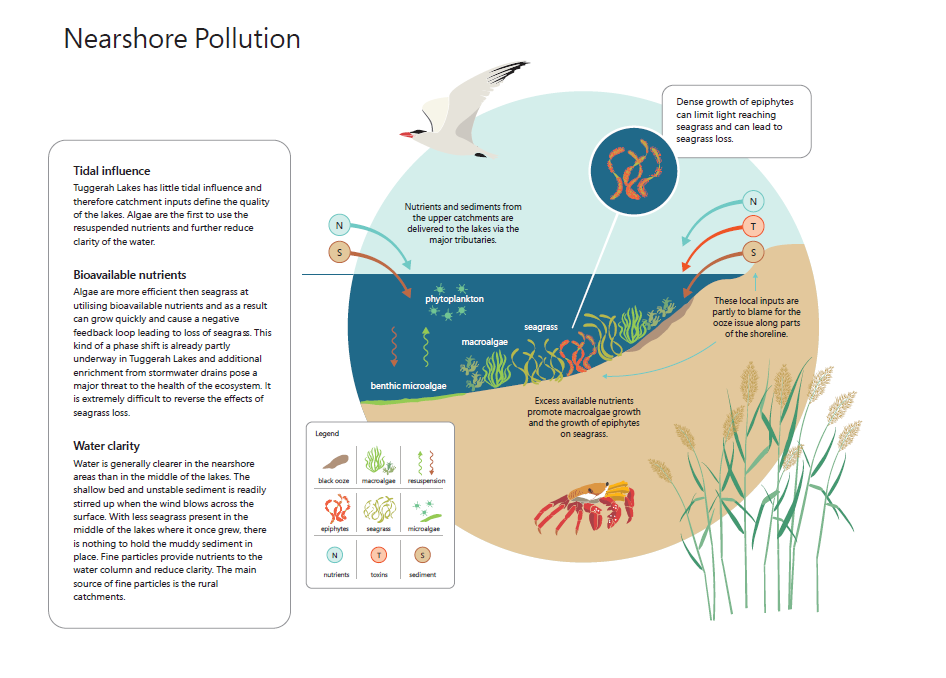Trees and plants are the natural filters of an estuary. They slow water flow, absorb nutrients, settle out sediment and provide a home to a vast array of native animals and insects. The loss of vegetation from streambanks, wetlands and foreshores has increased the amount of sediment and pollution that washes into the estuary. Instead of water flowing slowly across the landscape and filtering into the groundwater, channels and hard surfaces speed up the water flow, and direct it – along with the pollution it carries – straight into the lakes.
Similarly, stormwater runoff, which is a general term for water from urban areas that does not evaporate or soak into the ground, also contributes to water pollution. More hard surfaces and drains around the lakes result in faster-flowing rainwater with fewer barriers and filters along the way. Again, this results in pollutants quickly making its way to the estuary. To trap these impurities, we have been growing new wetlands and building treatment devices into our stormwater network. Now, we understand that the future of stormwater management lies in incorporating water quality treatment into our suburbs, not in covering them with concrete.
Working Together
The health of our estuary is in your hands too. Only when we work together, and focus on creating long-term solutions to a long-term problem, can we make our waterways clean, healthy and enjoyable for everyone.


